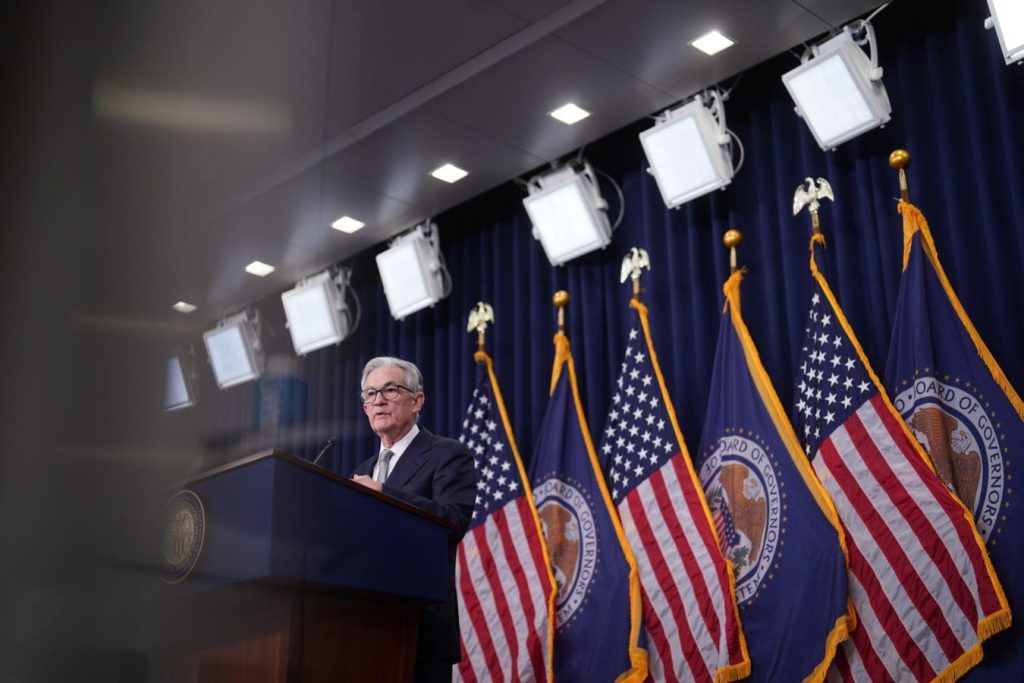The Federal Reserve is expected to ultimately cut interest rates in 2024, but in a measured way and with action weighted toward the second half. Today, the Fed Funds target rate is 5.25% to 5.5%. Markets expect that to fall by approximately 1% by the end of 2024 — as assessed by the CME FedWatch Tool, which measures the implied expectations of the debt markets. The current range of outcomes for rates suggests a likely figure between 4% and 5% for short-term rates by December 2024.
The Fed’s own more recent projections from September 20 are more hawkish than the market’s view. They suggest rates may not decline quite as much and fall to the 4.% to 5.5% range by December 2024.
However, Fed policymakers will update those projections at their next interest rate decision on December 1 when rates are expected to be held steady. Up to now, Fed officials have also argued that rates could increase again from here. That scenario is now being described more as a potential outcome under certain economic conditions than the base case for interest rates.
The Fed Meeting Calendar For 2024
During 2024 the Fed has the typical schedule of eight meetings to determine interest rates. Of course, the Fed can adjust monetary policy whenever it chooses. That could happen if 2024 sees unusual economic events. The Fed will announce decisions on interest rates following its two-day meetings ending on:
- January 31
- March 20
- May 1
- June 12
- July 31
- September 18
- November 7
- December 18
Each decision will be announced on the Fed’s website via a written statement at 2 p.m. ET with a press conference following the announcement. The minutes of each meeting are released three weeks later.
Every other meeting (for 2024, it’s March, June, September and December) will be accompanied by a Summary of Economic Projections. Here policymakers document their expectations for interest rates, growth, unemployment and inflation for the coming years and the longer run.
What To Expect
The current narrative is the inflation is cooling and on track to return to the Fed’s 2% annual target over the medium term. Of course, the Fed still wants to see more data confirming that view. It has asserted that rates may increase again if inflation does not move progressively lower.
However, markets have increasingly taken the position over recent weeks that inflation is controlled and no more interest rate increases are coming. That’s not entirely at odds with the Fed’s perspective, but Fed officials still express some concern that inflation may not move consistently lower from here.
A Soft Landing?
The other consideration is economic growth. The jobs market has remained robust to date, but jobs gains have slowed from high levels and could weaken further in 2024. There is some suggestion that with the yield curve flashing a recession warning and unemployment edging up, a 2024 recession may be coming.
A recession would likely be a positive in taming inflation, but it would also present risks to the Fed’s goal of maintaining full employment. If the economy sees something more severe than a so-called soft landing, and soft landings have historically been rare, then the Fed may be tempted to cut rates to help bolster the economy.
For now, the Fed has argued its goal is to maintain high rates for some time to manage inflation. Still, there is a potential scenario where a severe recession prompts the Fed to cut rates faster than planned.
Overall, interest rates, as set by the Fed, are expected to move down in 2024 in neither rapid nor dramatic fashion. If inflation were to unexpectedly heat up that picture could change. A severe recession, which is also not expected, might equally prompt the Fed to cut rates at a faster pace.
Read the full article here















